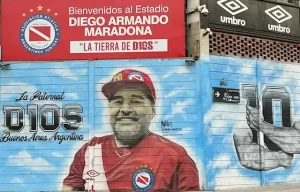Singapore Introduces Beverage Grading System
- EB Virus Could Be Infected by Kiss: A Hidden Threat Linked to Cancer
- The Silent Threat: How Gas Stoves Pollute Our Homes and Impact Health
- Paternal Microbiome Perturbations Impact Offspring Fitness
- New Report Casts Doubt on Maradona’s Cause of Death and Rocks Manslaughter Case
- Chinese academician unable to provide the exact source of liver transplants
- Early Biomarker for Multiple Sclerosis Development Identified Years in Advance
Singapore Introduces Beverage Grading System – Sugary Drinks Fall into Categories C and D
- AstraZeneca Admits for the First Time that its COVID Vaccine Has Blood Clot Side Effects
- Was COVID virus leaked from the Chinese WIV lab?
- HIV Cure Research: New Study Links Viral DNA Levels to Spontaneous Control
- FDA has mandated a top-level black box warning for all marketed CAR-T therapies
- Can people with high blood pressure eat peanuts?
- What is the difference between dopamine and dobutamine?
- How long can the patient live after heart stent surgery?
Singapore Introduces Beverage Grading System – Sugary Drinks Fall into Categories C and D.
Starting this year, Singapore has implemented a new labeling system for packaged beverages, as depicted in the image. Beverages are now categorized into four grades: A, B, C, and D.
Grade A indicates the healthiest drinks, followed by Grade B for relatively healthy options.
Manufacturers can voluntarily label their products as Grades A or B.
However, Grade C signifies unhealthy drinks, and Grade D represents the least healthy options.
For Grade D beverages, manufacturers are required to label them as such, essentially informing consumers that these drinks are unhealthy and best avoided.

Furthermore, Grade D beverages are considered so unhealthy that they are strictly prohibited from advertising on various platforms. Failing to label or advertising prohibited drinks can result in fines of up to 1000 Singapore dollars, with repeat offenders facing fines of up to 2000 Singapore dollars.
This marks the strictest regulations on packaged beverages ever implemented in Singapore, governed by the “Food Regulations (Amendment No. 2) Act”. By the end of this year, even handcrafted beverages like freshly squeezed fruit juices and bubble teas will also need to carry these labels.
What are the criteria for these ABCD grades? Which types of beverages fall into these categories, and where do common drinks fit in? Why has Singapore implemented such a grading system for beverages, and could other countries benefit from it? This article delves into these details.
Basis for Grading: Sugar Content and Saturated Fat Content
The sugar content criteria include not only rapidly digesting sugars like glucose, maltose, and sucrose but also slowly digesting sugars like isomaltulose, which has energy similar to sucrose, and even allulose, which has only 1/10 the energy of sucrose and doesn’t cause blood sugar spikes. The regulations are indeed comprehensive.
Beverages with sugar content ≤ 1 gram per 100 milliliters and saturated fat content ≤ 0.7 grams per 100 milliliters, without any added sweeteners like xylitol, erythritol, aspartame, or sucralose, are categorized as Grade A, the healthiest options.
Conversely, beverages with sugar content > 10 grams per 100 milliliters and saturated fat content > 2.8 grams per 100 milliliters fall into Grade D, representing the least healthy choices. For Grade C and D beverages, mandatory labeling is required, and Grade D drinks cannot be advertised on platforms like television, newspapers, cinemas, subways, as well as social media platforms like TikTok….
The regulations encompass a wide range of beverages:
Juices, sodas, dairy drinks, probiotic beverages, tea drinks, coffee drinks, sports drinks, and energy drinks are all included.
Even water, milk, plant-based milk (soy milk, almond milk, oat milk), herbal teas, barley water, liquid bird’s nest, some instant nutritional shakes, and powdered milk intended to be reconstituted with water are covered.
In essence, whether it’s a ready-to-drink beverage or an instant mix, the goal is to reduce sugar intake. The regulations encourage selecting Grade A and B options, minimizing Grade C choices, and preferably avoiding Grade D ones.
Interestingly, even though the sugar content of fresh cow’s milk is 0%, it’s still categorized as Grade C. This unexpected classification is due to the grading considering not only sugar content but also saturated fat content, which happens to fall within the Grade C range.
More than just movies, beverages are now graded: Last grade can’t be advertised!
Cowhead 100% Fresh Milk, Grade C, Sugar content 0%
Background of Singapore’s Beverage Grading:
High consumption of sugary drinks increases the risk of obesity and diabetes. A 2021 study conducted in Singapore found a 51% increase in diabetes risk in individuals who consumed more sugary drinks compared to those who consumed fewer.[1]
Singaporeans have a notably high sugar intake, averaging 60 grams of sugar per person per day, with half of it coming from sugary drinks.[2]
Their diabetes prevalence is also high, at around 8%. Without intervention, it’s estimated that by 2050, about 1 million Singaporeans could have diabetes.[3]

Due to these concerns, the Singaporean government conducted extensive research and efforts to reduce sugar intake.
This culminated in the “Food Regulations (Amendment No. 2) Act”, which was introduced in late 2021, followed by a year-long grace period for businesses. On December 30, 2022, the beverage grading labeling law came into full effect.
References:
[1] Nithya Neelakantan, Su Hyun Park, Guo-Chong Chen, Rob van Dam. (2021; In Press) Sugar-sweetened beverage consumption, weight gain, and risk of type 2 diabetes and cardiovascular diseases in Asia: a systematic review. Nutrition Reviews. [Notes: For the purpose of this study, “higher consumption” is defined as daily or almost daily consumption, with a median of 2 servings per day, and “lower consumption” is defined as rare or no consumption.] https://www.sfa.gov.sg/docs/default-source/legislation/sale-of-food-act/consultation-on-labelling-and-advertising-requirements-for-nutri-grade-beverages-(updated).pdf
Singapore Introduces Beverage Grading System – Sugary Drinks Fall into Categories C and D
(source:internet, reference only)
Disclaimer of medicaltrend.org
Important Note: The information provided is for informational purposes only and should not be considered as medical advice.



